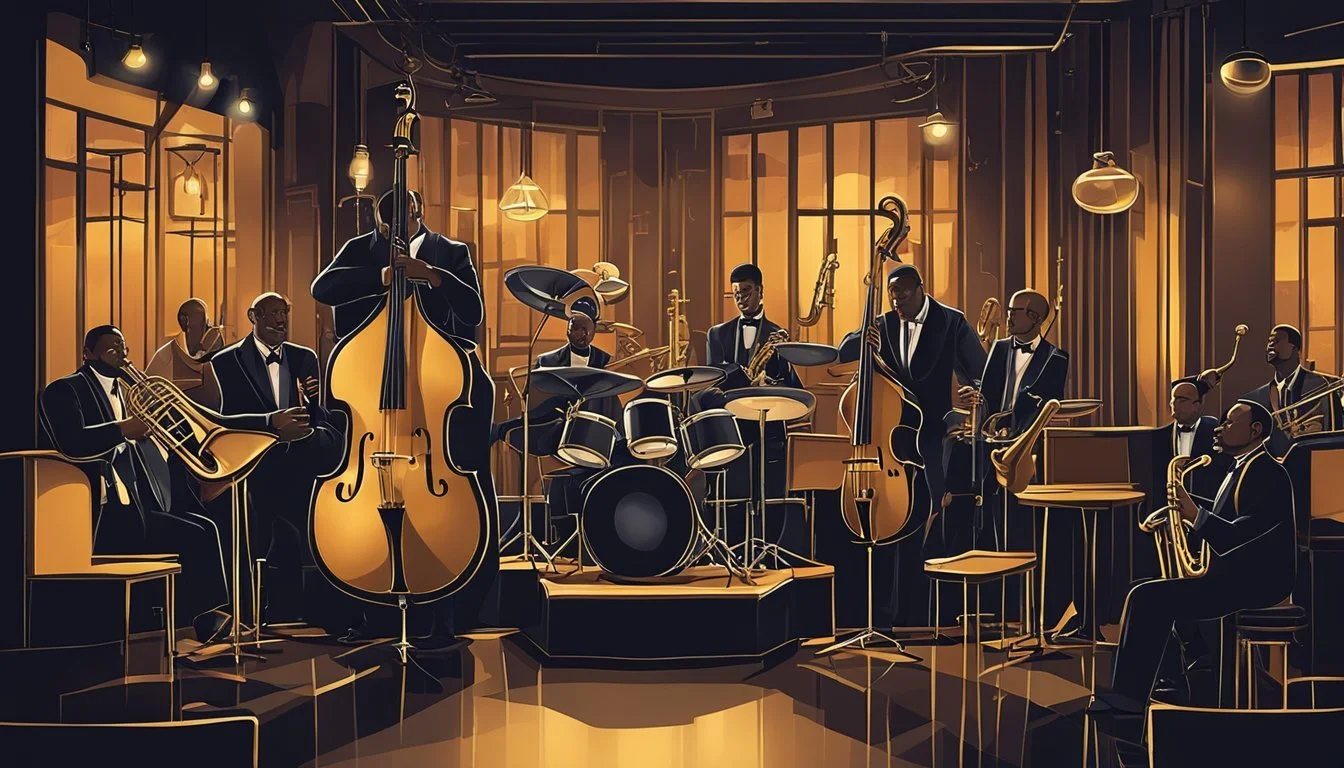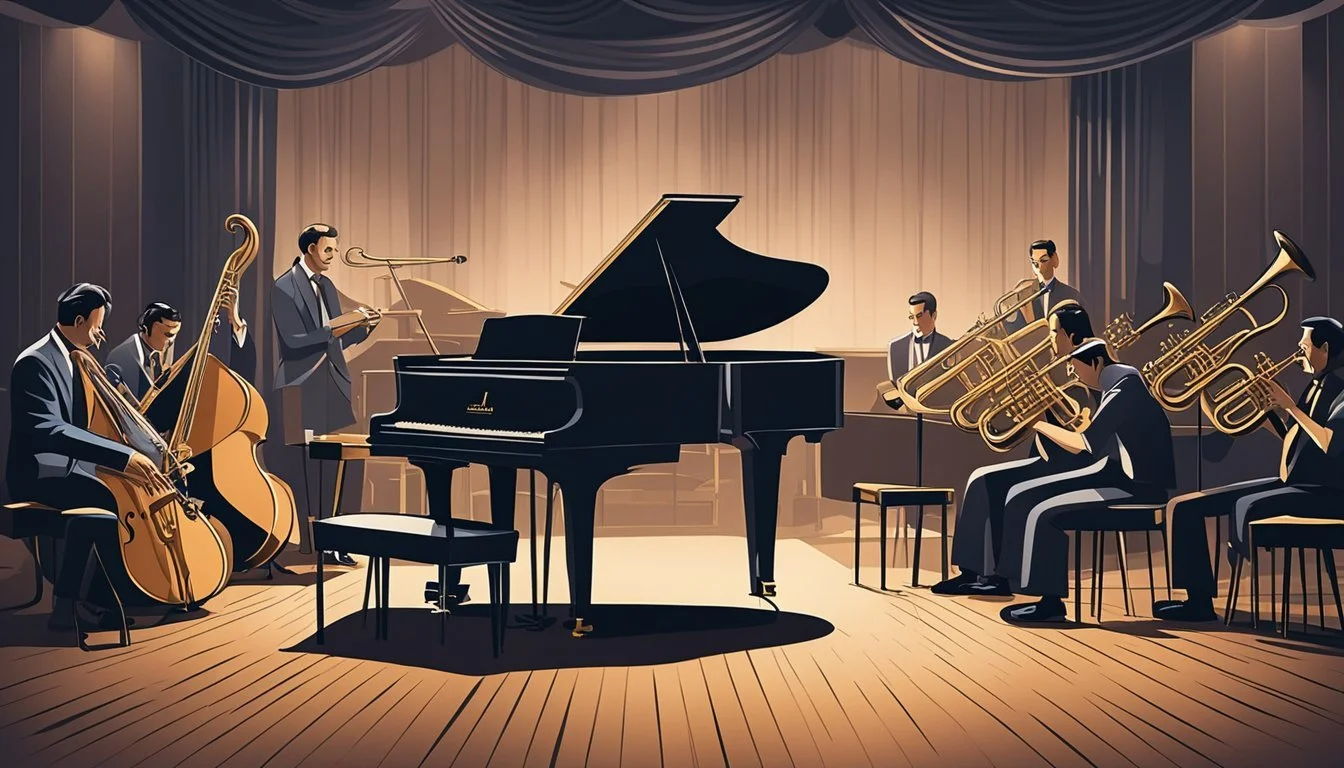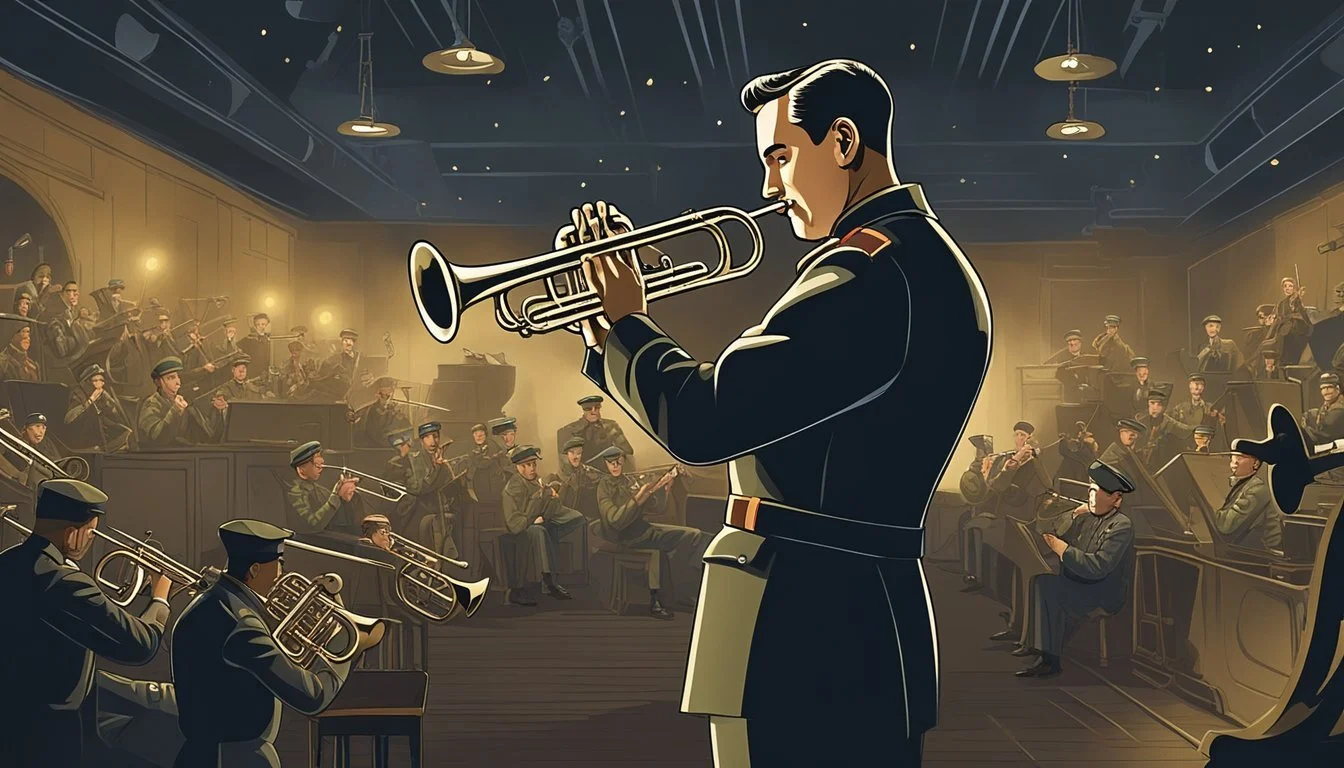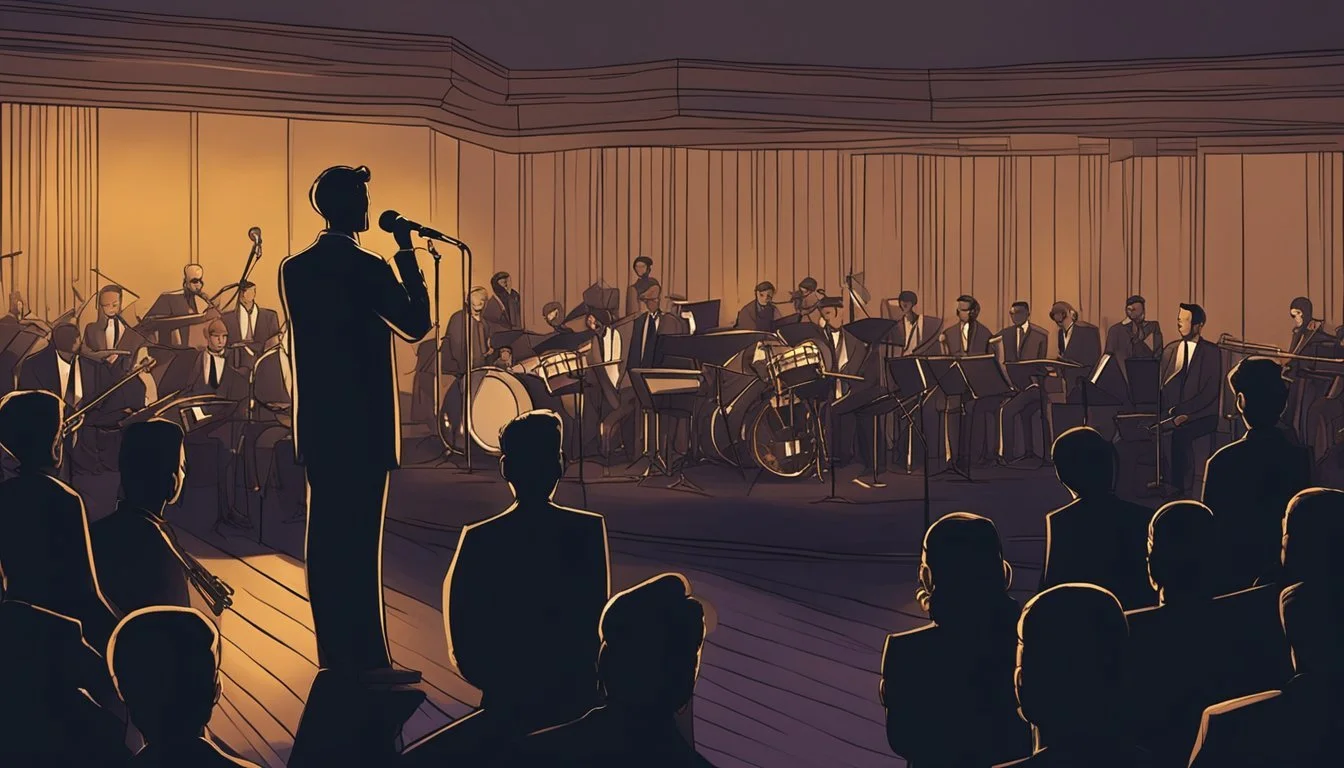Big Band Blues: Glenn Miller's Battle with Depression
Uncovering the Maestro's Hidden Struggles
Glenn Miller's meteoric rise to fame in the late 1930s and early 1940s made him the undisputed king of the big band era. His orchestra's hit songs like "In the Mood" and "Moonlight Serenade" captivated audiences worldwide, selling millions of records and earning Miller unprecedented success. Yet behind the polished performances and adoring fans, Miller grappled with periods of depression that cast a shadow over his musical triumphs.
The pressures of maintaining his status as America's most popular bandleader took a toll on Miller's mental health. Despite earning the equivalent of $330,000 per week in today's currency, he struggled to find contentment amidst the relentless demands of fame. As World War II intensified, Miller felt compelled to contribute to the war effort, eventually joining the Army Air Forces Band.
On December 15, 1944, Glenn Miller boarded a military plane to cross the English Channel, never to be seen again. His sudden disappearance remains one of music history's greatest mysteries, leaving fans to wonder about the complex man behind the music. Miller's battle with depression, often overshadowed by his professional achievements, adds a poignant dimension to the legacy of this big band icon.
Early Life and Musical Beginnings
Alton Glenn Miller's journey from a small-town boy to a musical icon began in the early 1900s. His formative years laid the foundation for his innovative approach to big band music and his battle with depression.
A Musical Prodigy Emerges
Born on March 1, 1904, in Clarinda, Iowa, Glenn Miller showed an early affinity for music. His family moved to various Midwestern towns during his childhood, finally settling in Fort Morgan, Colorado.
At Fort Morgan High School, Miller's musical talents blossomed. He joined the school band and quickly became proficient in the trombone. His dedication to practice and natural aptitude set him apart from his peers.
In 1923, Miller enrolled at the University of Colorado Boulder. Though he intended to study business, music remained his true passion. He joined the Sigma Nu Fraternity and spent much of his time playing in various bands.
Formation of Identity
Miller's university years were crucial in shaping his musical identity. He struggled to balance his academic pursuits with his growing musical ambitions. This internal conflict contributed to his decision to leave university after three semesters.
In 1924, Miller made the bold choice to pursue music full-time. He moved to Los Angeles and began playing with various orchestras. This period was marked by both excitement and uncertainty, as Miller honed his skills and sought to establish himself in the competitive music scene.
Miller's early experiences as a professional musician were challenging. He faced rejection and financial instability, which likely contributed to his bouts of depression. Despite these setbacks, he persevered, driven by his passion for music and determination to succeed.
Building a Big Band Legacy
Glenn Miller's rise to fame in the late 1930s and early 1940s was marked by innovative musical arrangements, chart-topping hits, and a distinctive sound that captivated audiences. His strategic approach to band leadership and business acumen propelled him to the forefront of the Big Band era.
Creating Glenn Miller and His Orchestra
In 1937, Glenn Miller formed his own orchestra after years of playing with other bands. He recruited top musicians and talented arrangers, focusing on creating a unique sound. Miller's perfectionism and dedication to rehearsals set his band apart from competitors.
The orchestra debuted at the Ray-Gor Ballroom in New York City, slowly building a following through radio broadcasts and live performances. Despite initial struggles, Miller's persistence paid off. By 1939, the band secured a residency at Glen Island Casino, a prestigious venue that boosted their popularity.
Chart-Topping Hits
Miller's band achieved unprecedented success with a string of hit records on Victor Records. Their breakout song, "Moonlight Serenade," became their signature tune and reached the Top 10 in 1939.
The orchestra's popularity soared with subsequent hits:
"In the Mood" (1940)
"Tuxedo Junction" (1940)
"Pennsylvania 6-5000" (1940)
"Chattanooga Choo Choo" (1941)
"A String of Pearls" (1942)
These songs dominated the charts, with "Chattanooga Choo Choo" becoming the first gold record in music history. Miller's ability to blend popular melodies with sophisticated arrangements appealed to both dancers and listeners.
The Unique 'Glenn Miller Sound'
The distinctive "Glenn Miller Sound" set his orchestra apart in the crowded Big Band landscape. This signature style featured a clarinet lead over four saxophones, creating a smooth, recognizable tone.
Miller's innovative approach included:
Emphasizing the reed section
Using the clarinet as the melodic lead
Incorporating unique harmonies
Arrangers like Bill Finegan and Jerry Gray played crucial roles in developing this sound. Songs like "Little Brown Jug" showcased the band's ability to swing while maintaining their signature smoothness.
The Glenn Miller Orchestra's popularity continued to grow, with radio performances and film appearances further cementing their place in music history. Their sound became synonymous with the Big Band era, influencing countless musicians and leaving an indelible mark on American popular music.
Transition to Military Service
Glenn Miller's shift from civilian big band leader to military musician marked a pivotal moment in his career. His desire to contribute to the war effort led him to join the U.S. Army Air Forces in 1942, where he would reshape military music and boost troop morale.
The Formation of the Army Air Forces Band
In August 1942, Miller wrote to General Charles Young, proposing a modernization of military music. His vision was to create a band that could inspire both troops and civilians. The Army accepted his proposal, and Miller was commissioned as a captain in the Army Specialist Corps.
Miller hand-picked talented musicians from various military units to form the Army Air Forces Band. This 50-piece ensemble combined the best elements of his civilian orchestra with the precision required for military performances. The band's repertoire included patriotic marches, swing numbers, and popular tunes.
Boosting Morale in Wartime
The Army Air Forces Band became a powerful tool for lifting spirits during World War II. Miller and his musicians performed at military bases across the United States and broadcast their music through the Armed Forces Radio Service.
Their performances reached millions of soldiers and civilians, providing a taste of home and a momentary escape from the realities of war. The band's music was featured in propaganda films and used by the Office of War Information to promote Allied unity.
In 1944, Miller and his band were transferred to England as part of the Allied Expeditionary Forces Programme. They performed for troops preparing for the D-Day invasion, solidifying their role as morale boosters in the European Theater.
Glenn Miller's Disappearance
Glenn Miller's sudden vanishing on December 15, 1944 remains one of music history's greatest unsolved mysteries. The famous bandleader's fate continues to captivate fans and researchers decades later.
Final Flight Mystery
Miller boarded a Noorduyn UC-64A Norseman at RAF Twinwood in England for a flight to Paris. The small military plane disappeared over the English Channel in foggy conditions. No trace of the aircraft or its occupants was ever found.
Several theories emerged about the cause:
Friendly fire from Allied bombers returning from an aborted mission
Mechanical failure due to carburetor icing
German anti-aircraft fire
Despite extensive searches, the crash site was never located. The lack of wreckage or bodies fueled speculation and conspiracy theories for years to come.
Legacy Continued in Absence
Miller's disappearance at age 40 cemented his legendary status. His music lived on through posthumous releases and tributes. The 1954 film "The Glenn Miller Story" starring Jimmy Stewart introduced a new generation to his work.
The Glenn Miller Archive at the University of Colorado Boulder preserves his legacy. It houses recordings, arrangements, and personal items.
Miller's Army Air Forces Band continued performing until 1945. Its modern successor, The Airmen of Note, still plays his classics at concerts worldwide. A memorial in his hometown of Clarinda, Iowa honors his contributions to music and military service.
Musical and Cultural Impact
Glenn Miller's impact on music and culture extended far beyond his lifetime. His innovative arrangements and distinctive sound shaped the big band genre and influenced generations of musicians.
Inspiration to Jazz Musicians
Miller's unique approach to orchestration, featuring clarinet-led melodies, inspired countless jazz musicians. His emphasis on tight harmonies and precise timing set new standards for big band performances. Many jazz artists adapted Miller's techniques, incorporating them into their own styles.
The Glenn Miller Orchestra's success paved the way for future jazz ensembles. Their polished sound and professional presentation elevated the status of big bands in popular culture. Miller's legacy lives on through groups like the Airmen of Note, the official jazz ensemble of the United States Air Force.
The Influence of 'Swing Era' Music
Miller's contributions to the Swing Era were substantial. His orchestra's hits like "In the Mood" and "Moonlight Serenade" became anthems of the period. These songs not only topped charts but also boosted morale during World War II.
The popularity of Miller's music helped solidify swing as a dominant force in American culture. His arrangements influenced dance styles and social gatherings. Even after his disappearance, Miller's impact continued through radio broadcasts and film soundtracks.
The American Band of the Allied Expeditionary Forces, led by Miller during the war, brought swing music to troops overseas. This effort further cemented the genre's place in cultural history and demonstrated music's power to unite people during difficult times.
Understanding the Man Behind the Music
Glenn Miller's life was marked by both personal struggles and professional triumphs. His journey reveals a complex individual who battled inner demons while achieving musical stardom.
Personal Life and Relationships
Glenn Miller married Helen Dorothy Burger in 1928, forming a lasting partnership. The couple adopted two children, adding depth to Miller's family life. His devotion to music often conflicted with family time, creating tension at home.
Miller's perfectionism extended beyond his music, impacting personal relationships. He set high standards for himself and others, sometimes straining friendships within the industry.
Despite challenges, Miller maintained close ties with fellow musicians. His collaborations, especially with the Dorsey Brothers Orchestra, shaped his musical style and career trajectory.
Struggles and Triumphs
Miller faced significant setbacks early in his career. Rejection and financial instability fueled periods of self-doubt and depression. He struggled to find his unique sound, experimenting with various musical styles.
His perseverance paid off when he formed his own band in 1937. Miller's innovative arrangements and distinctive sound catapulted him to fame. Hit songs like "In the Mood" solidified his place in music history.
World War II presented new challenges. Miller enlisted in the U.S. Army Air Forces, sacrificing his civilian career. He formed the Glenn Miller Army Air Force Band, boosting troop morale. His untimely disappearance during a flight to France in 1944 left a lasting legacy of resilience and patriotism.
Posthumous Recognition and Continuing Influence
Glenn Miller's legacy endured long after his disappearance in 1944. His music and contributions to the big band era continued to garner acclaim and inspire new generations of musicians and fans.
Awards and Honors
Miller received numerous posthumous accolades for his musical achievements and military service. In 1946, he was awarded the Bronze Star Medal for his wartime contributions. The U.S. Army presented his family with a Unit Citation in recognition of the Army Air Force Band's morale-boosting performances.
In 1983, Miller was inducted into the Grammy Hall of Fame. His recordings of "In the Mood" and "Moonlight Serenade" were added to the National Recording Registry by the Library of Congress in 2004 and 2005, respectively.
Reviving Interest and Remembrance
The 1954 film "The Glenn Miller Story," starring James Stewart, rekindled public interest in Miller's life and music. It became one of the highest-grossing films of that year.
In 2009, the PBS series "History Detectives" investigated Miller's disappearance, bringing his story to a new audience. The BBC has produced several documentaries about Miller, exploring his impact on music and popular culture.
The Glenn Miller Birthplace Society in Clarinda, Iowa, hosts an annual festival celebrating his music. This event attracts fans from around the world and features performances by contemporary big bands.








